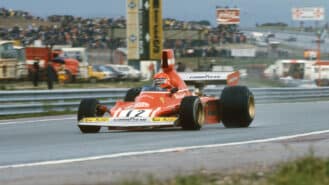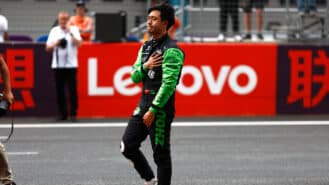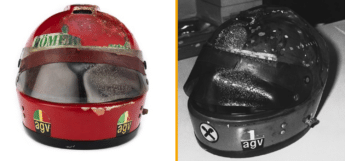On July 3 Cranfield University held the inaugural History of Motorsport Technology Conference – and it was deemed a great success.
Organised by Cranfield’s Motorsport Engineering and Management programme director Clive Temple, and led by guest of honour Sir Jackie Stewart, the day featured talks from leading motor racing engineers, designers and journalists. There were also a number of historically significant racing cars and motorbikes on display, including Stewart’s 1969 Matra MS80 and the groundbreaking Adrian Newey-designed Williams FW14B of 1992.

The conference, which was supported by Motor Sport, fell in between the Goodwood Festival of Speed and the British Grand Prix, forming an integral part of National Motorsport Week.
The morning session included David Tremayne’s look at the ideas behind the Land Speed Record attempts. Charles Armstrong-Wilson spoke about the inception of ground effect technology 50 years before Colin Chapman revolutionised the concept; Chapman’s innovations were themselves the subject of a talk by Lotus specialist Karl Ludvigsen.
During lunch, there were a number of displays and presentations from the likes of F1 technical expert Craig Scarborough, Cranfield alumnus Luke Crowley and Clive Temple, as well as a look at Matra and Mercedes F1 engines.
In the afternoon, former BRM chief designer Mike Pilbeam treated those assembled to a talk on F1 car design in the ’60s and ’70s, an era that saw a huge amount of development and innovation in the sport.
The Bill Boddy Award, named in honour of our Founder Editor, was presented to sports car designer Graham Humphrys for the best presentation on the day – ‘Group C – a decade of change’. Sir Jackie Stewart spoke over dinner about the future of the sport and Cranfield’s contribution to the motor sport sector.

Nearly 40,000 people are employed in motorsport in the UK, over half of which are qualified engineers. Not only that, with the industry boasting an annual turnover of approximately £6 billion, motor sport is a vital and often overlooked contributor to the country’s economy. We have our stars, but a true celebration of those toiling behind the scenes has been long overdue, and who knows? The next Chapman or Newey could be studying at Cranfield right now.
After the event, Clive Temple said: “Feedback has shown that there is an appetite for events of this nature. Not only is the past important in the context of the present. It often shapes the future. Mistakes are made and lessons need to be learnt. A key aspect of motorsport is safety. As Brian O’Rourke of Williams Grand Prix Engineering demonstrated in his presentation we have gone a long way where materials and their application to motorsport are concerned. Cranfield has played a crucial part in this as well as in many other aspects of high performance engineering and technologies associated with motor sport. We have a vital role to play in steering its future.”






